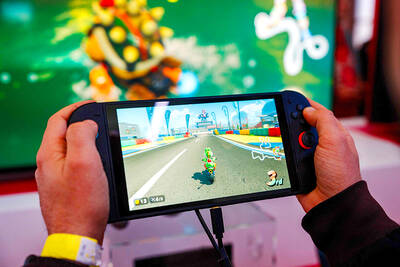Audi is to spend 24 billion euros (US$29.24 billion) to develop technology and expand production, boosting its five-year investment plan by 2 billion euros as it chases BMW for the top spot in luxury-car sales.
About 16.8 billion euros, or 70 percent of the total, is earmarked for new models like the Q1 subcompact sport-utility vehicle, the Ingolstadt, Germany-based unit of Volkswagen AG said on Friday in a statement.
Audi expects to sell a record of more than 1.7 million autos this year.
“We are making large investments in the innovative areas of electric mobility, connectivity and lightweight construction,” Audi chief executive officer Rupert Stadler said in the statement. The brand intends to increase its lineup to 60 models by 2020, from 50.
Audi, No. 2 in global luxury-car sales, aims to surpass BMW AG’s namesake brand in deliveries by the end of the decade.
The race tightened this year. BMW outsold Audi by just 42,600 cars in the first 11 months of the year, compared with 54,600 a year earlier. Audi’s budget is part of Volkswagen’s 85.6 billion-euro investment program to beat Toyota Motor Corp in global auto-industry sales.
Audi plans to spend the equivalent of 4.8 billion euros a year, an increase from the previous rolling five-year plan that called for investing 4.4 billion euros annually, on new vehicles and expanding production capacity.
“Despite the growth in total investment, we will keep a watchful eye on the upcoming challenges and exercise the required cost discipline,” chief financial officer Axel Strotbek said.
Audi, which already outsells BMW in China and Europe, is aiming to catch up in the US. Last month, it unveiled the Prologue concept car in Los Angeles to showcase a more aggressive design. The company also plans an electric crossover for the US in 2017 to challenge Tesla Motors Inc and is building a factory in Mexico that will start building the Q5 SUV in 2016 for America.
Meanwhile, Tesla is offering a suite of upgrades to the sporty two-seater it no longer sells that will give owners as much as a 644km range, enough to drive from San Francisco to Los Angeles.
Improved battery technology can provide 31 percent more energy than the original Roadster cells, the Palo Alto, California-based company said in a blog on its Web site. Combined with an aerodynamics kit, new tires and improvements to wheel bearings and brakes, range can be increased as much as 50 percent compared with the original Roadster, Tesla said.
The company did not say what it will charge for the upgrades, which it collectively calls Roadster 3.0.
“There is a set of speeds and driving conditions where we can confidently drive the Roadster 3.0 over 400 miles [644km],” Tesla said in the blog post. “We will be demonstrating this in the real world during a non-stop drive from San Francisco to Los Angeles in the early weeks of 2015.”
Tesla sold about 2,500 of the US$109,000 Roadsters, which were built on a Lotus chassis.
The Model S, the only car Tesla currently has in production, will get a battery-pack upgrade eventually, though not soon, chief executive officer Elon Musk said in a tweet over the weekend.

With an approval rating of just two percent, Peruvian President Dina Boluarte might be the world’s most unpopular leader, according to pollsters. Protests greeted her rise to power 29 months ago, and have marked her entire term — joined by assorted scandals, investigations, controversies and a surge in gang violence. The 63-year-old is the target of a dozen probes, including for her alleged failure to declare gifts of luxury jewels and watches, a scandal inevitably dubbed “Rolexgate.” She is also under the microscope for a two-week undeclared absence for nose surgery — which she insists was medical, not cosmetic — and is

GROWING CONCERN: Some senior Trump administration officials opposed the UAE expansion over fears that another TSMC project could jeopardize its US investment Taiwan Semiconductor Manufacturing Co (TSMC, 台積電) is evaluating building an advanced production facility in the United Arab Emirates (UAE) and has discussed the possibility with officials in US President Donald Trump’s administration, people familiar with the matter said, in a potentially major bet on the Middle East that would only come to fruition with Washington’s approval. The company has had multiple meetings in the past few months with US Special Envoy to the Middle East Steve Witkoff and officials from MGX, an influential investment vehicle overseen by the UAE president’s brother, the people said. The conversations are a continuation of talks that

CAUTIOUS RECOVERY: While the manufacturing sector returned to growth amid the US-China trade truce, firms remain wary as uncertainty clouds the outlook, the CIER said The local manufacturing sector returned to expansion last month, as the official purchasing managers’ index (PMI) rose 2.1 points to 51.0, driven by a temporary easing in US-China trade tensions, the Chung-Hua Institution for Economic Research (CIER, 中華經濟研究院) said yesterday. The PMI gauges the health of the manufacturing industry, with readings above 50 indicating expansion and those below 50 signaling contraction. “Firms are not as pessimistic as they were in April, but they remain far from optimistic,” CIER president Lien Hsien-ming (連賢明) said at a news conference. The full impact of US tariff decisions is unlikely to become clear until later this month

Nintendo Co hopes to match the runaway success of the Switch when its leveled-up new console hits shelves on Thursday, with strong early sales expected despite the gadget’s high price. Featuring a bigger screen and more processing power, the Switch 2 is an upgrade to its predecessor, which has sold 152 million units since launching in 2017 — making it the third-best-selling video game console of all time. However, despite buzz among fans and robust demand for pre-orders, headwinds for Nintendo include uncertainty over US trade tariffs and whether enough people are willing to shell out. The Switch 2 “is priced relatively high”